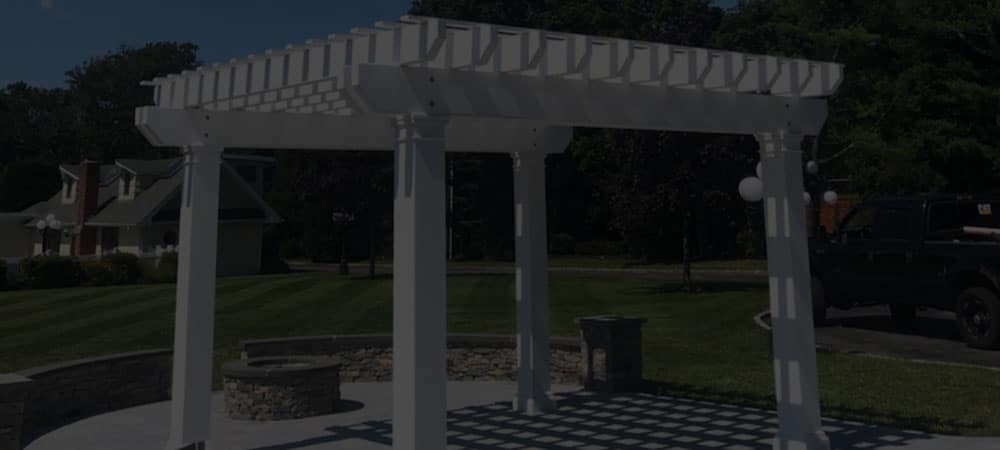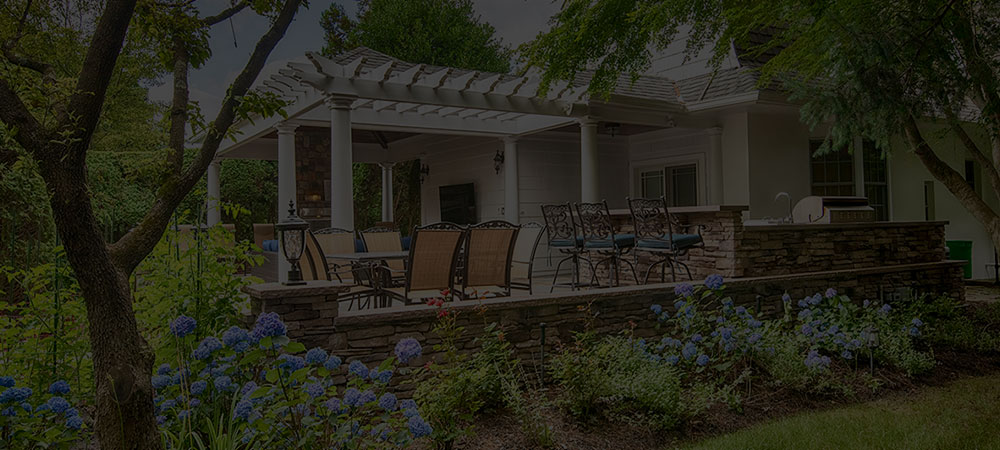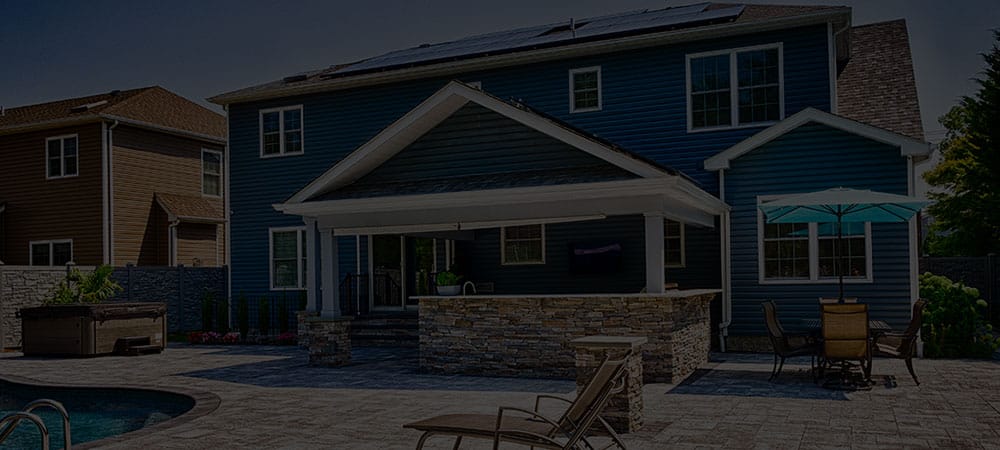Installing a pergola in your landscape or outdoor living space can improve the appearance of the space and provide shelter from the sun, rain, and other elements. There are numerous styles and materials of pergolas that have their benefits so deciding on one can be difficult. So, before consulting pergola contractors, you should know about these types of pergola styles and materials.
Types Of Pergola Styles
Freestanding Pergolas
A freestanding pergola can be installed anywhere in the backyard. It stands completely on its own without the support of the structure of the house. As with any pergola, freestanding pergolas can be installed for a yard, patio, or deck.
This style of pergola is favored by homeowners who have a bigger yard and want to create a beautiful living space a bit away from the house. Freestanding pergolas allow for more customizations and designs because the pergola won’t be near the house so you’re not restricted by the style of your house’s exterior.
Attached Pergolas
These pergolas are attached to the house. They can be either built completely on their own or attached to the exterior of the house. This style of pergola is for people who want to make the transition from the house to the outdoors seamless.
Moreover, homeowners who have a limited backyard space like attached pergolas. Plus, if you already have an attached patio or deck, an attached pergola would be the only pergola style you would want.
Floating Or Awning Pergolas
This pergola design is a breakout from traditional pergola styles because it doesn’t include any columns or posts. The roof of the pergola is attached directly to the wall of the house.
People install floating pergolas due to their aesthetics. A floating pergola appears stylish and modern while it performs the basic job of a pergola nicely.
The disadvantage of a floating pergola is the stability of the structure. If you live in a region where strong winds are common, you should choose a traditional pergola with posts or columns.
Arched Pergolas
Arched pergolas are less common in residential houses and more frequently seen in commercial areas where a beautiful yard or other natural-related items need to be showcased. But homeowners who choose this style, don’t easily get bored of it.
All other types of pergolas have a flat roof, but arched pergolas have arched tops. They appear distinct, rustic, and more romantic. Moreover, an arched pergola can have four (or more) pillars but they are joined together with similar materials to form walls.
Other Types Of Pergolas
The above types are the major ones, however, there are some other styles of pergolas you can have within the types mentioned earlier.
Shaded Pergolas
Traditional pergolas have rafters that allow some sunlight and rain. They may be a good choice for some people, but many homeowners appreciate the option to make their pergola shaded when required.
A pergola can be shaded by placing a waterproof cloth on it that can be extended and retracted manually. However, if you want a permanently shaded pergola, you can have a roof installed on it instead of rafters to create an ideal place for hanging out outdoors at any time of the day. You can make your freestanding, attached, or floating pergola shaded.
Modular Pergolas
They are not as common as shaded pergolas but they serve the same purpose. Modular pergolas or louvered pergolas have moveable rafters that you can adjust to avoid sunlight exposure. These rafters can be electric or manual. Whether you want a freestanding, attached, or floating pergola, you can make it modular by the installation of moveable rafters.
Keep in mind that a modular pergola only protects you from the sun, but you will still have to deal with rain and snow. Moreover, moving manual rafters can be tedious. If you want shade from both the sun and rain, choose a shaded pergola with a retractable cloth on the roof.
Another benefit of a shaded pergola oven modular pergola is that you can make your existing pergola shaded without rebuilding the entire pergola with moveable rafters. All you need to do is install a cloth on the roof that can be extended and retracted.
Types Of Pergola Materials
Wood Pergolas
Wood is the most popular material for building pergolas because of its appearance. Moreover, if you choose durable wood types like redwood, cedar, mahogany, and others, the pergola will last for years. This is because these woods have natural oils that resist rot, shrinking, warping, insects, fungi, and other common problem associated with wood. Nevertheless, you will need to repaint or retain it every few years to keep it protected against moisture, pests, and rot.
Vinyl Pergolas
Vinyl is low-maintenance when compared to wood. You can get away with yearly pressure washing the pergola to keep it maintained. However, if you go for high-quality vinyl for durability, it can become costlier than wood.
Aluminum Pergolas
Aluminum is strong and lightweight so it’s an excellent choice for modern and contemporary style pergolas. You don’t need much maintenance with aluminum as well because it’s a type of metal that doesn’t rust.
Steel Pergolas
You may consider aluminum and steel similar because they appear the same but they are different from each other. Steel is heavier than aluminum. Plus, steel can rust if exposed to excessive moisture while aluminum doesn’t.
With that said, you will wonder why to install a steel pergola instead of an aluminum pergola. Steel is preferred where durability and sturdiness are required. So, if you choose galvanized steel, you’ll solve the rust problem and will have a better pergola than aluminum.
Fiberglass Pergolas
Fiberglass is also called composite plastic and glass-reinforced plastic. It’s resistant to rust and corrosion so you would only need to power wash your pergola once a year.
Fiberglass is similar to vinyl but is more long-lasting and stronger. So, if you need a durable pergola material other than steel and aluminum, you should choose fiberglass.
Moreover, fiberglass is more durable than plastic so it won’t soften with exposure to the sun. However, it can crack with strong winds or hailstorms. In this case, you’re better off using a galvanized steel pergola that will prove to be more durable.
Concrete Pergolas
If you want the most durable pergola material there is, you should choose concrete because concrete pergolas can last for the entire age of the house.
A concrete pergola will give your pergola a classic Ancient Greece appearance. But you don’t need to go for classic styles, concrete can be molded into any design so you can select straight designs that would appear contemporary and match your house. For maintaining a concrete pergola, clean it once a few months and repair cracks and chips.
PVC Pergolas
We recognize PVC from the PVC plumbing pipes used in homes but different thicknesses and shapes of PVC can be used for building a pergola as well. However, PVC is not used solely to avoid stability problems. Aluminum internal support is used for durability and the exterior is made of PVC. This creates a maintenance-free pergola that only needs cleaning every few months.
Conclusion
Knowing the basic pergola styles and materials will enable you to plan for your pergola wisely. For more details and a custom pergola design, call in custom pergola builders Long Island.



